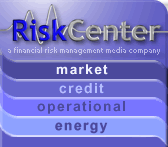Location: New York
Author: RiskCenter Staff
Date: Tuesday, October 30, 2007
The Middle East and Central Asia region is undergoing a remarkable transformation, driven by rapid GDP growth, which is set to outpace global growth for the eighth year in a row. Helped by continuing high oil and non-oil commodity prices, and despite increased uncertainties in global financial markets, growth in the region is projected to stay in the 6–7 percent range in 2008.
All parts of the region are doing well, with growth in the Caucasus and Central Asia projected to be especially strong at 11 percent, the fourth year of double-digit growth. Unemployment remains a big concern, however, especially in the Maghreb countries, where more moderate growth of 5–6 percent is expected.
But inflation is on the rise in many countries. Fueled by strong demand growth, large external inflows, and generally accommodative monetary policies, average inflation in the region has picked up to 8–9 percent. For oil exporters, the increase has been particularly sharp, to nearly 10 percent in 2007, from 7 percent in 2006. In the context of pegged or heavily managed exchange rates, higher inflation is resulting in significant real exchange rate appreciation in many countries, as would be expected in response to rising oil prices. With no major changes in the policy stance envisaged, inflation is likely to ease only slightly in 2008.
As oil producers have ramped up their spending, saving in the region has declined. With imports of investment and consumer goods increasing rapidly, oil exporters’ current account surplus has dropped to about 17 percent of GDP, from 21 percent in 2006, even though oil prices remain at record highs. Higher private and public sector spending has contributed to this. In the Gulf Cooperation Council (GCC) countries,2 investment spending plans amount to at least $800 billion over the next five years, with major projects in the oil and gas sectors (funded largely by national oil companies), infrastructure (mainly under public-private partnerships), and real estate (financed primarily by the private sector).
However, governments in oil-exporting countries, which receive a large share of oil revenues, continue to manage their resources prudently by running sizable fiscal surpluses, only a little below the peaks recorded in 2005–06. Their saving from fiscal oil revenue is projected at about 42 percent in 2007–08, down from about 45 percent in 2005–06.
The recent global credit market turmoil has so far left the region’s capital markets largely unscathed.
Following the sharp equity market correction in 2006, most markets have stabilized or partially recovered their losses. The pace of initial public offerings (IPOs) has eased, but sukuk (Islamic bonds) issuance continues to grow. Signs of stress have, however, been evident in a tightening of liquidity and a widening of bond spreads of banks that have borrowed heavily from abroad, notably in Kazakhstan. While the outlook remains positive, downside risks from the global economy have increased. If the credit crunch continues, growth in developed economies could slow sharply, with substantial spillovers to other parts of the world.
Further spikes in oil or food prices would add to inflationary pressures and pose a dilemma for policymakers attempting to forestall an economic slowdown. Such a scenario would test the region’s resilience, which has been strengthened in recent years by sound macroeconomic policies, huge increases in official reserves and other foreign assets, and reductions in debt.
To view the full report, click here.

To subscribe or visit go to: http://www.riskcenter.com